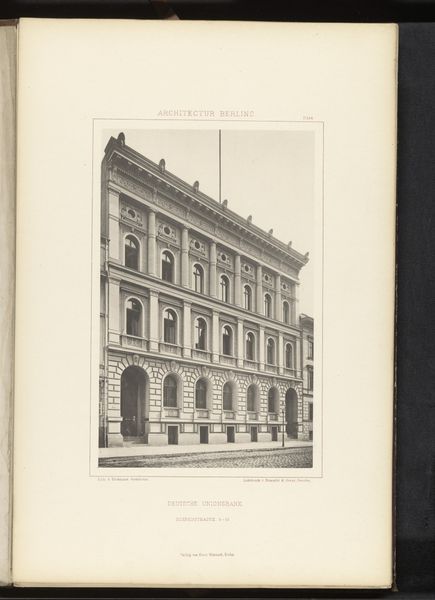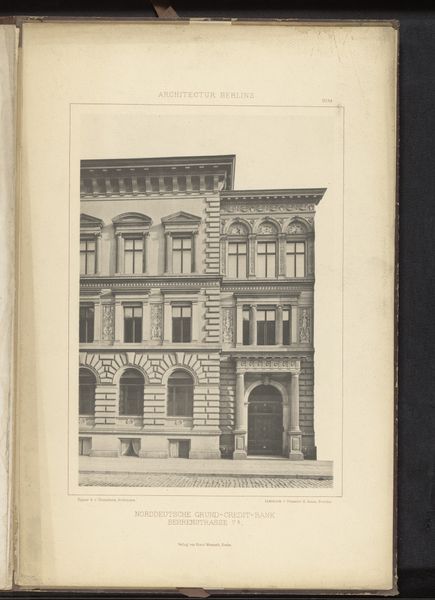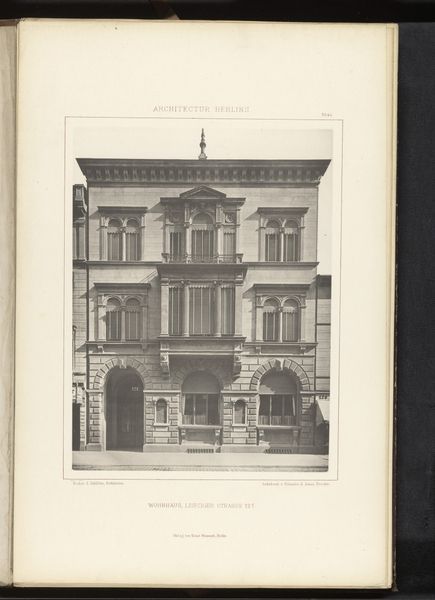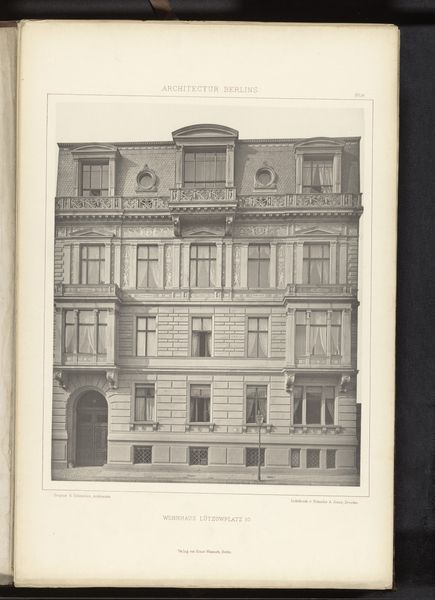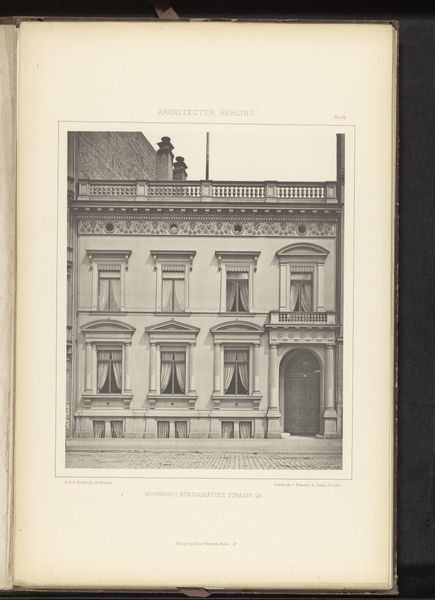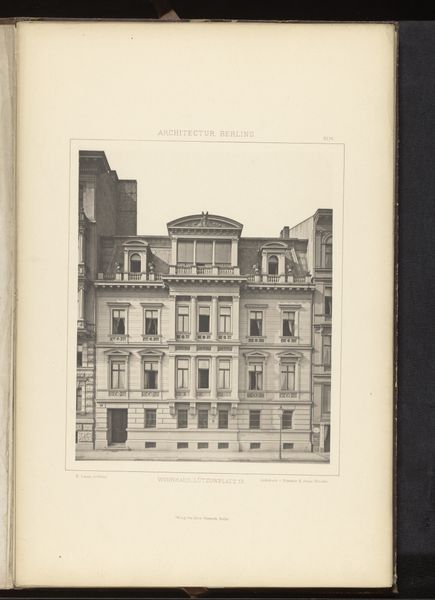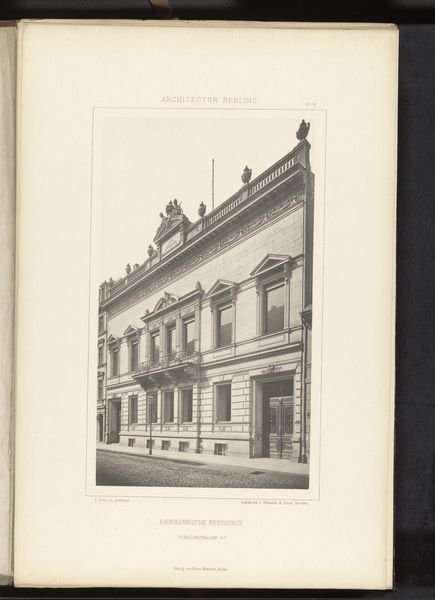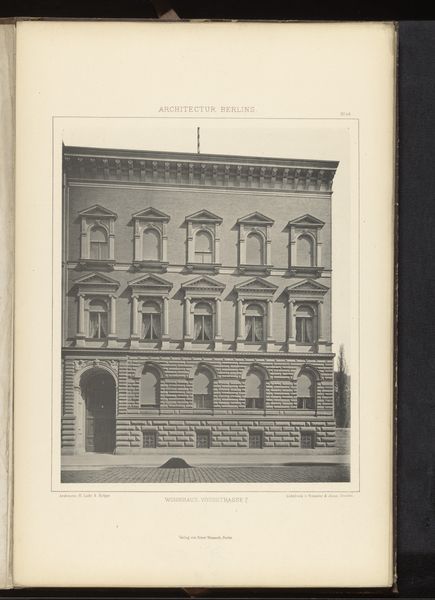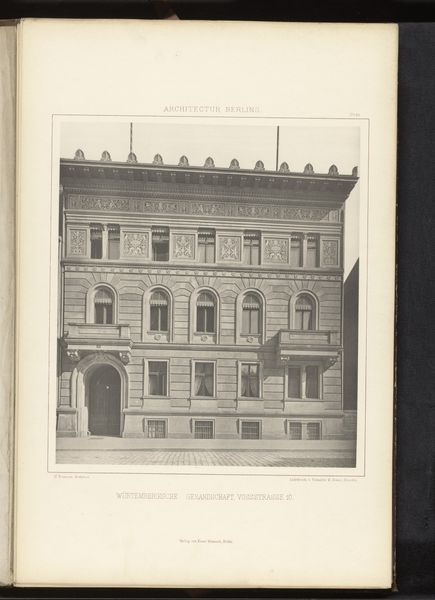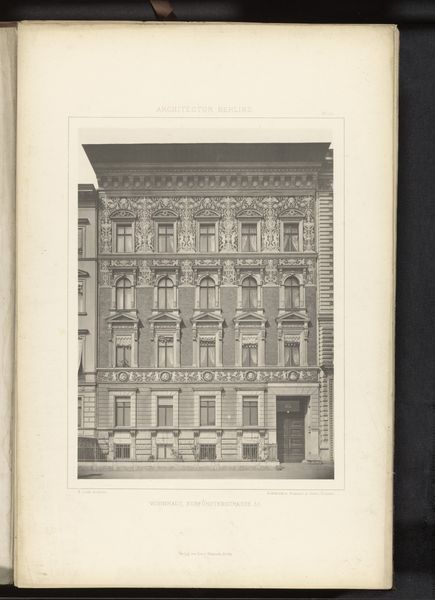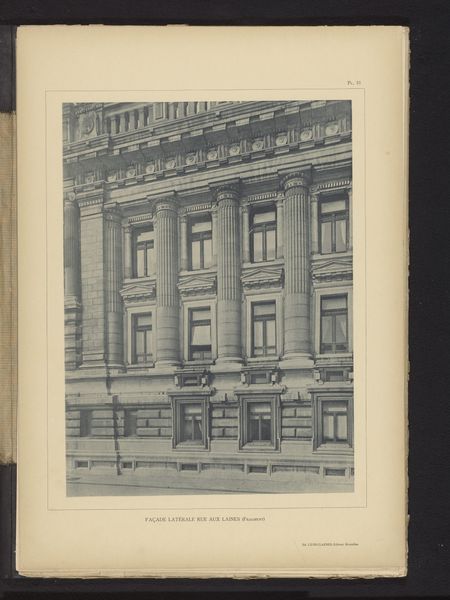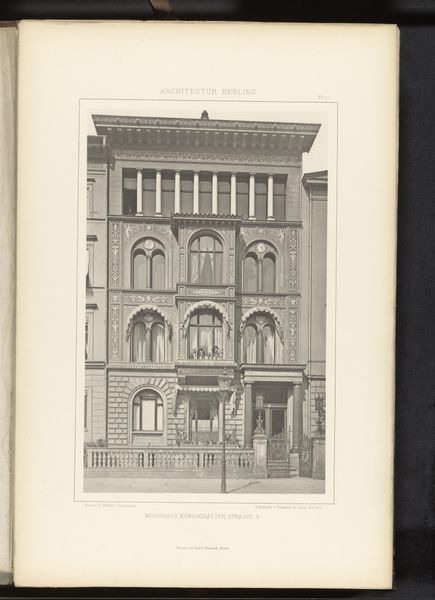
Gezicht op een woonhuis aan de Mohren-Strasse 54 in Berlijn, Duitsland before 1877
0:00
0:00
anonymous
Rijksmuseum
Dimensions: height 281 mm, width 189 mm
Copyright: Rijks Museum: Open Domain
Curator: At first glance, it’s incredibly precise, almost sterile in its depiction of a building. Editor: And yet, I find a strange comfort in its architectural accuracy. What we’re seeing is a print of an architectural photograph, prior to 1877, that gives us a view of a residential building at Mohren-Strasse 54 in Berlin, Germany. It's currently held here at the Rijksmuseum. Curator: Indeed, let's look at the materials. It's a photographic process meticulously translated into a print. The engraver here would have had to capture the nuances of light and shadow, mimicking the realism the original photograph offers. And how would that photograph itself affect the market of hand drawn architecture designs? What new means and division of labour does photography allow in architectural production? Editor: I wonder about the residents of this building. Mohrenstrasse was in a central, developing area of Berlin during that period. What political figures, financiers, or intellectuals inhabited it? How did their lives intersect with the growing Imperial Germany? Also, the building’s classical façade strikes a note – who commissioned its design? Was it meant to project an image of stability and power? Curator: It's all about access too. Prints made architectural designs accessible, they democratize the field and offer architectural plans, details to the masses. Was this photo commissioned, sponsored or state-sanctioned and for what means was the print destined for? What sort of authority does this print have to reproduce a real building, a private address? Editor: Exactly! And how do we access the address in times of conflict? Does reproducing buildings promote urban cohesion or create dangers and risks in case of conflict and crisis? What social responsibilities are triggered by mass availability? Curator: It’s amazing how a seemingly straightforward architectural study can unveil layers of material concerns. Editor: And pose larger questions of society at the time. This detailed portrayal speaks volumes about ambition.
Comments
No comments
Be the first to comment and join the conversation on the ultimate creative platform.
